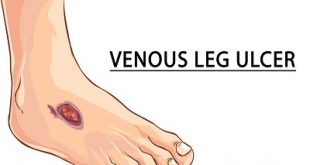Overview of Voice Disorders
Voice disorders refer to a range of conditions that affect the vocal cords and the production of sound during speech. These disorders can result in alterations in pitch, volume, tone, or quality of the voice, leading to difficulties in communication. Common voice disorders include hoarseness, vocal nodules, laryngitis, and more severe conditions like vocal cord paralysis. Voice disorders can be caused by various factors, including vocal misuse or abuse, infections, neurological issues, or structural abnormalities within the vocal cords or the surrounding areas. Treatment for voice disorders often involves speech therapy, rest, lifestyle modifications, and, in some cases, surgical intervention to restore or improve vocal function.
Voice disorders can have a significant impact on an individual’s quality of life, especially for those whose professions require clear and effective communication, such as teachers, singers, and public speakers. Early diagnosis and appropriate management are crucial to address voice disorders effectively and help individuals regain or enhance their vocal abilities.
Epidemiology
Voice disorders are estimated to affect around 20 million individuals in the United States, making up approximately 0.98% of the population. Among both adults and children, vocal abuse stands out as the leading cause of these disorders. Among adults, teachers are particularly vulnerable to such issues. To investigate the prevalence of voice disorders among educators and identify associated risk factors, a 2008 case-control study involving 905 teachers in Spain was conducted. The study involved teachers completing a questionnaire, followed by a thorough head and neck examination along with video laryngostroboscopy.
The findings of this study revealed that 57% of the teachers had voice disorders, with vocal overstrain being the most common issue, affecting 18% of the participants. Another study compared the occurrence of voice disorders between daycare center teachers and nursing staff, revealing a higher risk among teachers in comparison to the nursing staff. Specifically, the prevalence of voice disorders among teachers was 11.6%, while it was only 7.5% in the non-teacher population. Furthermore, teachers reported a higher occurrence of current and past voice disorder symptoms when compared to non-teachers.
Pathophysiology of Voice Disorders
As of now, there is no widely agreed-upon terminology for specific voice disorder conditions in the literature. However, it is observed that many voice pathologies stem from improper vocal practices, notably inadequate vocal technique (such as voice strain, insufficient hydration, neglecting the need for vocal rest), subpar oral care and hygiene, recurrent laryngeal infections, and excessive throat clearing. Individuals dealing with chronic vocal issues often describe a sensation of a “lump in the throat,” technically referred to as globus hystericus. This sensation can frequently indicate the presence of laryngopharyngeal reflux, which may manifest even in the absence of noticeable heartburn symptoms.
Types of Voice Disorders
Common types of voice disorders include spasmodic dysphonia, vocal cord nodules, and musculoskeletal dysphonia.
Spasmodic Dysphonia
A voice disorder where tight muscles constrict the larynx, causing disruptions to the larynx’s motions and generating a jerky or shaky voice. Symptoms may include difficulty sustaining a normal tone or volume, difficulty transitioning rapidly between sounds or pitches, and frequent loss of voice.
Treatment often involves speech therapy and exercises to strengthen affected muscle groups, as well as occasionally injections of botulinum toxin.
Vocal Cord Nodules
Vocal cord nodules are growths that develop on the vocal cords due to overuse and strain on the vocal cords. Symptoms of vocal cord nodules include hoarse voice, breathiness, muscle tension, and difficulty sustaining notes while singing. Treatment options for nodules range from voice and speech therapy to minor surgery to remove them.
Musculoskeletal Dysphonia
Musculoskeletal dysphonia is a type of functional voice disorder that results from inefficient use of the muscles involved in speaking and/or the inadequate coordination of the muscles. Symptoms include hoarseness, breathiness, vocal strain, vocal fatigue, and reduced loudness.
Musculoskeletal dysphonia can be caused by a variety of factors including poor vocal hygiene, psychological stressors, neurological conditions or diseases such as Parkinson’s or Multiple Sclerosis, smoking/alcohol use, certain medications and/or environmental allergens.
Treatment may include vocal rest and physical exercises such as lip moving exercises to strengthen the muscles involved in speaking.
Symptoms of Voice Disorders
An individual experiencing a voice disorder may have a voice quality that sounds:
- Unstable or quivering
- Rough, harsh, or hoarse
- Strained or choppy
- Weak, whispery, or breathy
- Too high or too low
- Significantly changed in pitch
Other symptoms include:
- Tension or pain in your throat when you speak
- Feeling that your larynx (voice box) is tired
- Feeling of a “lump” in your throat when swallowing
- Pain when you touch the outside of your throat
If you have been experiencing one or more of the above symptoms for more than two weeks, you should make an appointment with a specialist for an evaluation.
What are the causes of Voice Disorders?
Anything that prevents or disrupts your vocal fold movement can cause a voice disorder. There is a wide range of factors that can interfere with this normal function. Some causes of voice problems include:
- Vocal abuse: Vocal abuse is any type of behavior that can strain, harm, or injure your vocal folds. This can be caused by excessive talking or screaming, inhaling irritants, smoking, coughing, or clearing your throat. Vocal abuse can often lead to the development of nodules, polyps, or other growths on your vocal folds, which can change how your voice sounds. Frequently engaging in activities that cause vocal abuse and damage your vocal folds can have both temporary or permanent effects on your voice quality and vocal function.
- Abnormal growths: Some people may develop extra tissue on their vocal folds that can impact their function. These growths have a variety of causes, including injury, vocal abuse, cancer, or illness. These growths can take many forms, including nodules, polyps, cysts, papillomas, lesions, and more.
- Nerve problems: Your central nervous system controls your voice and swallowing abilities. There are several health conditions that can affect these nerves, including multiple sclerosis, Huntington’s disease, Parkinson’s disease, or amyotrophic lateral sclerosis (also referred to as ALS or Lou Gehrig’s disease).
- Inflammation and swelling: When your vocal cords become inflamed, they can affect your natural airflow. Inflammation and swelling of the vocal folds can be caused by surgery, respiratory illness, allergies, smoking, vocal abuse, substance abuse, and more.
- Hormones: Disorders that affect your hormones can cause voice disorders, including thyroid hormones and growth hormones.
Risk factors
Risk factors that can contribute to a voice disorder:
- Ageing
- Alcohol consumption
- Allergies
- Gastroesophageal reflux disease
- Illnesses such as upper respiratory infections or colds
- Neurological disorders
- Trauma at the front of the neck or from neck surgery
- Screaming
- Stress
- Smoking
- Throat dehydration
- Thyroid problems
- Voice overuse or misuse
Complications of Voice Disorders
Voice disorders can lead to various complications, especially if left untreated or if the underlying causes are not addressed. Some potential complications and associated problems with voice disorders include:
- Decreased Quality of Life: Persistent voice problems can affect daily communication, leading to social and emotional issues, reduced self-esteem, and a lower quality of life.
- Chronic Pain: Conditions like vocal cord nodules or polyps can cause chronic throat pain or discomfort.
- Vocal Fatigue: Continual strain on the vocal cords can result in vocal fatigue, making it challenging to speak or sing for extended periods.
- Hoarseness: Prolonged hoarseness can make speech less clear and may be a sign of an underlying issue.
- Loss of Income: Individuals whose careers depend on their voices, such as singers, teachers, or call center employees, may experience a loss of income or job-related difficulties due to voice disorders.
- Vocal Cord Damage: Untreated or severe voice disorders can lead to permanent damage to the vocal cords, potentially requiring surgical intervention.
- Psychological Effects: Ongoing voice problems can lead to anxiety, depression, or social isolation due to difficulties in communication.
- Recurrent Infections: Some voice disorders may make the vocal cords more susceptible to infections, leading to recurrent throat and respiratory infections.
- Worsening of Underlying Conditions: Voice disorders caused by conditions like acid reflux or allergies may worsen if these underlying issues are not managed properly.
- Voice Changes: In some cases, voice disorders can result in permanent changes in voice quality or pitch.
- Aspiration: If the vocal cords do not close properly due to certain voice disorders, there is a risk of food or liquid entering the airway (aspiration), which can lead to respiratory problems like pneumonia.
- Limited Vocal Range: Voice disorders may limit one’s vocal range, making it challenging to express oneself fully.
It’s important to seek medical attention if you experience persistent voice problems, as early diagnosis and treatment can help prevent or mitigate these complications. T
How to diagnosis voice disorders?
If you feel the change in voice then consult an ENT – ear, nose, and throat specialist (otolaryngologist). The doctor will ask you about the symptoms and how long you’ve had them. The ENT doctor will check your vocal cords and larynx using certain tests. These may include:
Laryngoscopy: This lets the doctor check your throat from inside. With indirect laryngoscopy, the ENT specialist holds a small mirror at the back of the throat and shines a light on it. With fibre-optic laryngoscopy, a thin, lighted scope (laryngoscope) is used.
Laryngeal EMG (electromyography): It measures electrical activity in the throat muscles. A thin needle is put into some of the neck muscles. At the same time, electrodes send signals from the muscles to a computer. This can show nerve problems in the throat.
Stroboscopy: This test uses a strobe light and a video camera and a microphone to see the pattern of vibrations of the vocals cords as we speak
Imaging tests: X-rays and MRI can show growths or other tissue problems in the throat.
Sakra World hospital has the best ENT doctor in Bangalore providing the best care and treatment you need.
Treatments for Voice Disorders
Whether your child’s voice disorder is the result of a congenital malformation, injury or the side effect of an illness, our comprehensive approach allows us to develop a treatment plan that addresses your child’s unique needs.
Vocal hygiene: Our speech-language pathologists will work with you and your child to identify possible habits that may be contributing to vocal cord irritation, and to learn about healthy ways to use your voice that will help your vocal cords heal and stay healthy. . This can include learning to avoid yelling, establishing good voice habits, and learning to rest your voice. It may also include things like drinking enough water to keep your vocal cords well hydrated, and avoiding foods that may cause reflux, as this can also irritate the vocal cords.
Voice therapy: Once your child has been evaluated by one of our otolaryngologists and referred for voice assessment and therapy, our speech pathologists will develop a treatment program specifically targeted to your child’s specific needs. For younger children (under 5), this may include helping families design home programs to develop and reinforce healthy voice habits. Most effective for children ages 5 and up, direct voice therapy focuses on weekly sessions designed to teach vocal techniques that promote efficient use of breath support for voicing, and reducing strain and effort with speaking.
Surgical treatments: Surgery for benign vocal fold lesions or for vocal fold paralysis is recommended in rare instances, for example when the child cannot achieve the desired voice use or when there is a medical need to prevent aspiration of food and liquids. For children requiring surgery, our pediatric otolaryngologists offer a full range of surgical techniques to repair or rebuild vocal structures. Often times, these procedures are performed by surgeons who also participate in our airway disorders and aerodigestive disorders clinics.
Some of the surgical procedures we offer include:
- Vocal cord injection, a procedure done under anesthesia that involves injecting a substance into the vocal cord to help it approximate to the opposite side. Injected materials may be temporary, intermediate term, or long-term substances.
- Vocal cord medialization, a procedure in which the paralyzed vocal cord is pushed to the middle so that the functioning vocal cords can close as necessary for normal voice and swallowing.
- Vocal cord reinnervation, an innovative procedure for vocal cord paralysis in which the surgeon takes a branch of the ansa cervicalis, a motor nerve in the neck, and sews it to the recurrent laryngeal nerve, the nerve that gives the vocal fold mobility and tone.
Surgery to remove vocal cord nodules is not recommended for children, due to the likelihood of recurrence, as well as increased risk for developing scar tissue that will interfere with vocal fold vibration for healthy voice production. Vocal cord nodules are best treated by voice therapy.
Prevention
To prevent voice disorders and maintain vocal health, consider the following points:
- Stay Hydrated: Drink water to keep your throat moist.
- Use Proper Technique: Speak and sing without straining your voice.
- Take Breaks: Rest your voice, especially if you talk a lot.
- No Smoking: Avoid smoking and secondhand smoke.
- Manage Stress: Reduce stress to help your voice.
- Stay Healthy: Eat well and exercise for overall health.
- Avoid Loud Yelling: Don’t shout or scream loudly.
- Don’t Clear Your Throat Excessively: It can harm your voice.
- Use a Humidifier: Keep the air moist in dry places.
- See a Doctor: If you have vocal problems, see a doctor or specialist.
- Control Acid Reflux: Manage acid reflux to protect your voice.
- Warm-Up Your Voice: Do gentle vocal warm-up exercises.
- Speak Softly Instead of Whispering: Whispering can strain your voice more.
These steps can help keep your voice healthy and prevent voice disorders.
 Diseases Treatments Dictionary This is complete solution to read all diseases treatments Which covers Prevention, Causes, Symptoms, Medical Terms, Drugs, Prescription, Natural Remedies with cures and Treatments. Most of the common diseases were listed in names, split with categories.
Diseases Treatments Dictionary This is complete solution to read all diseases treatments Which covers Prevention, Causes, Symptoms, Medical Terms, Drugs, Prescription, Natural Remedies with cures and Treatments. Most of the common diseases were listed in names, split with categories.








How can I have a clear voice
To improve a clear voice with voice disorders:
-Stay well-hydrated and avoid irritants like smoke and caffeine.
-Practice vocal rest and warm-up exercises to reduce strain.
-Consider speech therapy for exercises and techniques to enhance vocal control.
-Address underlying issues with the help of healthcare professionals, such as an ENT specialist, to ensure comprehensive management and improvement of your voice.